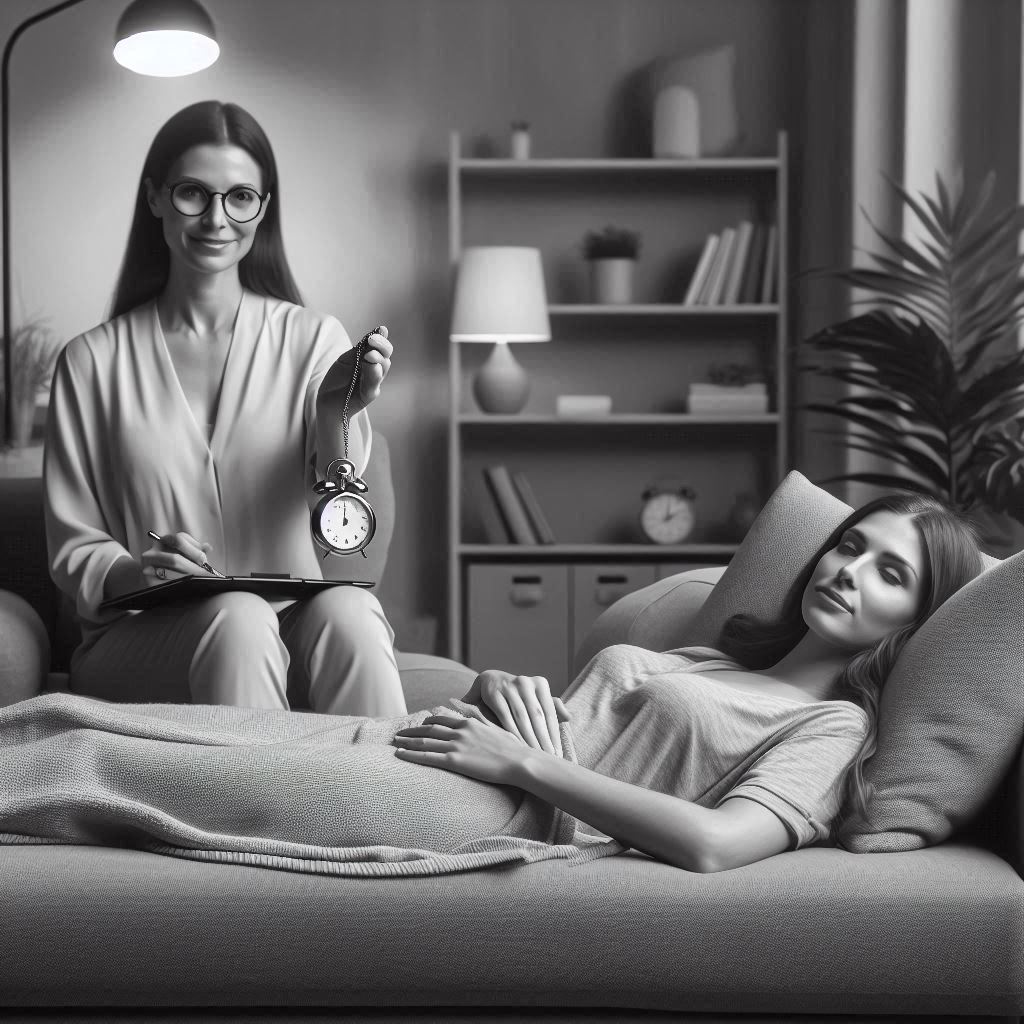Ever wonder why some people seem to form healthy relationships while others struggle? The answer might be in attachment theory. This concept, rooted in psychology, suggests that our early interactions with caregivers shape our emotional and social development. Simply put, the bonds we form as children impact how we relate to others as adults.
Attachment theory highlights four main styles: secure, ambivalent, avoidant, and disorganized. These patterns influence everything from friendships to romantic relationships, making them vital for understanding human behavior. With this insight, you can better comprehend why you act the way you do in relationships and start to cultivate healthier connections.
Ready to uncover how your early years have shaped your adult relationships? Let’s dive into the fascinating world of attachment theory and find out.
Origins of Attachment Theory
Attachment theory helps us understand how the bonds we form with our caregivers in early life shape our emotional development. Let’s dive into how this theory came to be and the key figures behind it.
John Bowlby and His Contributions
John Bowlby was a British psychoanalyst who is considered the father of attachment theory. His ideas emerged from his work in the 1930s and 1940s when he studied children who had been separated from their parents. Bowlby noticed that these children often experienced severe emotional issues.
Bowlby proposed that the relationship between a child and their primary caregiver is crucial for the child’s development. He introduced the concept of attachment behavior, which is the tendency of children to seek closeness to their caregiver when they feel upset or threatened. Bowlby argued that this behavior is innate and helps ensure the child’s survival.
Here are some of his key contributions:
- Maternal Deprivation Hypothesis: Bowlby believed that prolonged separation from the mother could lead to long-term cognitive, social, and emotional difficulties.
- Internal Working Models: He suggested that early interactions with caregivers form a template for future relationships.
Mary Ainsworth’s Research
Mary Ainsworth was an American-Canadian developmental psychologist who built upon Bowlby’s ideas. She is best known for her Strange Situation experiment, which provided empirical evidence to support attachment theory.
In this experiment, Ainsworth observed how children aged 12-18 months reacted to a series of eight short episodes involving separations and reunions with their mothers. Based on the children’s behavior, she identified three primary attachment styles:
- Secure Attachment: Children feel confident that their caregiver will meet their needs.
- Insecure-Avoidant Attachment: Children show indifference towards their caregiver.
- Insecure-Resistant Attachment: Children exhibit anxiety and uncertainty about the caregiver’s responsiveness.
Ainsworth’s work highlighted the importance of the caregiver’s sensitivity and responsiveness in forming a secure attachment. She demonstrated that children with secure attachments tend to have better social and emotional outcomes.
Together, Bowlby and Ainsworth laid the foundation for understanding the profound impact of early caregiver relationships on a child’s development. Their pioneering work continues to influence psychology, parenting, and even educational practices today.
The Four Attachment Styles
Attachment theory explains how the bonds we form with our caregivers in early life shape our relationships. Understanding the four attachment styles can help us navigate our own relationships better. Here’s a detailed look at each attachment style:
Secure Attachment
Secure attachment is like the golden standard of attachment styles. People with secure attachment feel confident and comfortable in their relationships. They trust others and enjoy close emotional connections. Here are some characteristics of secure attachment:
- Trust and Stability: Securely attached people generally trust their partners and feel secure in their relationships. They aren’t afraid of being abandoned.
- Healthy Communication: They are good at expressing their feelings and needs openly. They also listen well.
- Positive Self-Image: They have a balanced view of themselves and others. They believe they deserve love and that others are capable of giving it.
The positive effects of secure attachment on relationships include fewer conflicts, better communication, and a deep sense of trust. This leads to healthier and more fulfilling relationships.
Anxious (Ambivalent) Attachment
Anxious attachment, also known as ambivalent attachment, is characterized by a constant need for reassurance. People with this attachment style often worry about their relationships. Here are the key traits:
- Fear of Abandonment: They are always worried that their partner will leave them. This fear can make them clingy.
- Need for Validation: They seek constant validation and approval from their partners to feel secure.
- Emotional Rollercoaster: Their relationships often have high highs and low lows, making them feel emotionally exhausted.
Anxious attachment affects relationship dynamics negatively. It can lead to codependency, frequent arguments, and inconsistency in the relationship.
Avoidant Attachment
Avoidant attachment style, also known as dismissive attachment, is when a person tries to avoid emotional closeness. They value their independence a lot. Here are some common features:
- Emotional Distance: They often keep their partners at an emotional distance, avoiding deep emotional connections.
- Self-Reliance: They prefer to rely on themselves rather than on their partners.
- Difficulty with Intimacy: They find it hard to open up and be vulnerable, making deeper emotional connections difficult.
People with avoidant attachment might struggle with commitment, intimacy, and closeness. They might also come off as emotionally unavailable.
Disorganized Attachment
Disorganized attachment is the most complex of the four attachment styles. People with this style show a mix of behavior that can be erratic. They might be unpredictable in their relationships. Here are the primary characteristics:
- Fear and Confusion: They often feel confused about relationships and may fear intimacy. Their actions can appear contradictory.
- Unpredictable Behavior: They can switch between seeking closeness and pushing it away, creating confusion in their relationships.
- Past Trauma: This style often stems from past trauma or abuse, making relationships a source of fear and anxiety.
Disorganized attachment often manifests as instability and unpredictability in relationships. It can lead to chaotic relationships filled with stress and mistrust.
Understanding these four attachment styles can help you recognize patterns in your own relationships and work towards healthier connections. Identifying your own attachment style is the first step to improved emotional well-being and better communication with your loved ones.
The Impact of Early Relationships
Early relationships play a crucial role in shaping who we become, influencing our emotional and social development. The bonds we form as children with our caregivers can leave lasting impressions, affecting our confidence, trust, and how we interact with others throughout our lives.
Attachment in Childhood
The attachments we form in childhood can significantly impact our behavior and relationships in adulthood. Here’s how:
- Secure Attachment: If a child feels safe and supported, they are more likely to grow into a confident and empathetic adult. Securely attached children tend to have better self-esteem, stronger friendships, and healthier romantic relationships.
- Insecure Attachment: Children who experience neglect or inconsistency often develop insecure attachment styles. This can manifest as anxiety, difficulty trusting others, and challenges in forming intimate relationships.
For instance, think of attachment as a foundation for a house. A strong, secure foundation supports a sturdy home, while a weak foundation can lead to cracks and instability. Similarly, secure attachments in childhood provide a strong base for emotional health.
Attachment in Adulthood
The attachment styles formed in childhood don’t just disappear; they evolve and carry into adult relationships, impacting everything from friendships to romantic partnerships.
- Secure Adults: Those with secure attachments from childhood tend to have healthier, more stable relationships. They are able to trust and rely on their partners while also maintaining independence.
- Anxious Adults: Individuals with anxious attachment styles often crave closeness but fear abandonment. This can lead to clinginess or excessive dependence on their partner.
- Avoidant Adults: Avoidant attachment can lead to emotional distance or difficulty in forming deeper connections. These individuals may prioritize independence to the point of avoiding intimacy.
- Disorganized Adults: Those with a disorganized attachment may show a mix of behaviors, often rooted in past trauma or inconsistent caregiving.
Imagine carrying an invisible backpack from childhood filled with emotional tools. Securely attached individuals have backpacks filled with trust and self-worth, while those with insecure attachments might carry tools that cause self-doubt or fear of intimacy.
In summary, our early relationships set the stage for how we connect with others throughout our lives. By understanding these attachment styles, we can better navigate our own relationships and work towards healthier connections.
Applications of Attachment Theory
Understanding attachment theory can be helpful in many areas. From therapy to parenting, it offers ways to build better relationships and improve communication. Let’s look at two specific applications.
Therapeutic Interventions
Therapists use attachment theory to address relationship issues by understanding how early attachments affect current behaviors. It works like this:
- Exploring Childhood Experiences: Therapists help clients understand their early relationships with parents or caregivers. This helps identify patterns that affect their adult relationships.
- Creating a Safe Space: Just like a child needs a safe home, clients need a trusting environment to share their feelings. Therapists aim to create this safe space.
- Developing New Skills: Clients learn new ways to interact with others. This includes better communication and emotional regulation.
In therapy, attachment-based therapy focuses on rebuilding trust and setting a supportive relationship. This is especially effective for those who have experienced trauma or neglect. For example:
- Parent-Child Interaction Therapy (PCIT): This method works with both parents and children to improve their relationship. It helps parents understand their child’s needs and respond appropriately.
- Attachment-Focused Family Therapy: The whole family works together to understand their attachments. This helps to foster healthier dynamics and emotional support.
Parenting and Attachment
Fostering secure attachment in children is crucial for their development. Here are some strategies:
- Be Responsive: Children need to know that their parents will respond to their needs. This helps them feel safe and secure.
- Emotional Availability: Parents should be emotionally present. This means listening to their child’s feelings and validating them.
- Consistency: Providing stable routines and consistent responses helps children feel more secure.
Parents can use several methods to build secure attachments:
- Attachment-Based Parenting Programs: These programs teach parents how to read their child’s cues and respond effectively. They provide tools to help parents support their child’s emotional growth.
- Psycho-Education: Educating parents about child development and attachment theory helps them understand the importance of their role.
- Support Systems: Parents also need support. Community resources and counseling can offer guidance and stress relief.
By understanding and applying attachment theory, both therapists and parents can build stronger, healthier relationships. This not only helps in immediate interactions but also sets the stage for better emotional health in the future.
Conclusion
Understanding attachment theory helps us make sense of how and why people form relationships. It’s more than just a fancy term from psychology—it’s about the very roots of human connection.
Key Takeaways
Here are the main points we’ve covered about attachment theory:
- Foundation of Relationships: Our early experiences with caregivers shape how we bond with others throughout life. If we feel safe and loved in childhood, we’re likely to form secure attachments later.
- Attachment Styles: There are four main attachment styles—secure, ambivalent, avoidant, and disorganized. Each affects how individuals interact in relationships.
- Impact on Everyday Life: Understanding your own attachment style can help improve your relationships. It’s a tool for better self-awareness and emotional health.
Why Attachment Theory Matters
Attachment theory isn’t just about understanding the past; it’s about improving the present and future relationships. Knowing how attachment works can:
- Enhance Communication: When we understand our own and others’ attachment styles, we can communicate more effectively.
- Improve Relationships: Awareness leads to empathy. By understanding our partner’s attachment style, we can better meet their needs.
- Support Personal Growth: Recognizing unhealthy patterns allows us to work towards healthier relationships.
Applying Attachment Theory
Here are some practical ways to use the insights from attachment theory:
- Self-Reflection: Think about your own childhood and how it might influence your current relationships. Are you secure, or do you lean towards avoidance or anxiety?
- Educate Yourself: Read more about attachment styles and learn how they manifest in daily interactions.
- Seek Professional Help: Sometimes, understanding your attachment style may require the help of a therapist, especially if you’re dealing with deep-seated issues.
Attachment theory gives us a lens to view our interactions in a new light. It’s like having a map to navigate the complexities of human connection. Keep this theory in mind as you move forward, and you’ll likely find your relationships becoming richer and more fulfilling.








